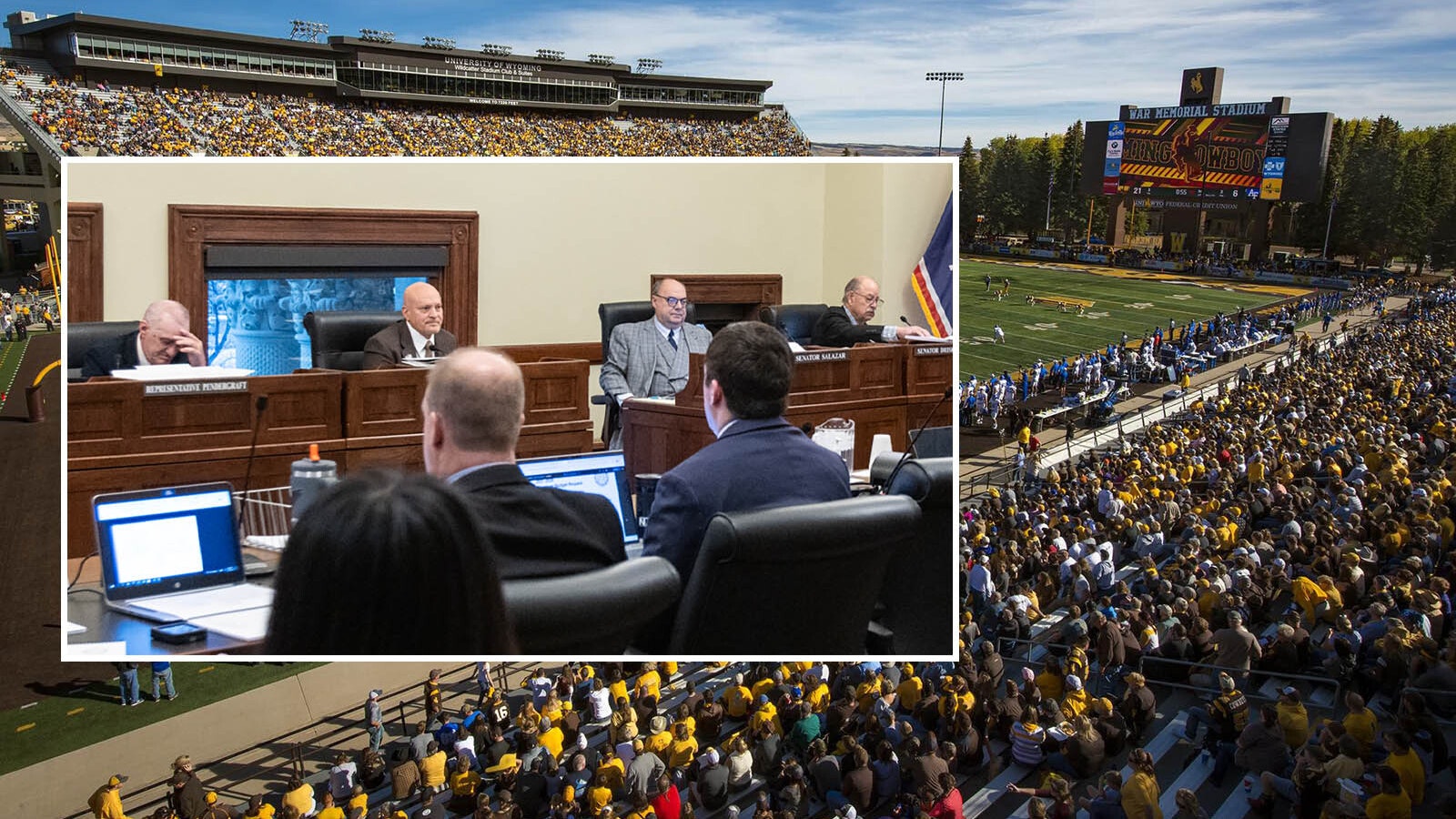The more than 850,000 acres that burned across Wyoming last year made 2024 the second-worst wildfire season on record. If that happens again, many areas around the state could be in serious trouble.
That’s the message some local-level firefighters gave to the Legislature’s Joint Appropriations Committee on Monday.
Shortages of firefighters and equipment could reduce the state’s ability to control and put out wildfires while they’re still small, said State Forester Kelly Norris, Sublette County Fire Warden Shad Cooper and Campbell County Fire Warden J.R. Fox.
The Joint Appropriations Committee is one of 12 interim committees that meet between sessions of the Wyoming Legislature to study issues assigned by the Management Council. The committee includes House and Senate appropriations committee members and has been tasked with studying wildfire response, prevention and management funding.
Every fire department that responded to a 2024 survey said it is struggling to retain firefighters recruit new members. With fewer firefighters available, there’s less capacity to respond to and gain control of fires while they’re small, Cooper said.
“That reduction scares me,” he said. “I think it should scare everyone in the state of Wyoming, because if [it continues], we are not going to be able to fight these fires. We’re going to have more wildland fires because they escape because we’re not able to capture them and keep them small.”

A Problem Everywhere
The shortage is a problem all over Wyoming and the West, Norris said.
A graph provided shows Wyoming has the fewest state forestry fire personnel among 11 Western states. Wyoming has 64 people available compared to 542 in Idaho, 335 in Utah, 330 in Alaska, 319 in Montana, 303 in Colorado, 301 in Arizona, 255 in Nevada, 143 in New Mexico and 106 in South Dakota.
Because of the lack of personnel and employees filling multiple roles, Wyoming State Forestry employees recorded more than $330,000 in overtime last year and employees drove more than 100,000 miles on state vehicles, Norris said.
“This is not sustainable,” she said. “It is a major red flag for our staff when it comes to their safety, their home-work-life balance and real burnout that’s happening.”
Many county fire departments are already stretched thin, Fox told the committee.
Twenty-nine percent of Wyoming’s fire departments are understaffed and the state is short 468 firefighters, according to a 2022 survey conducted by the Wyoming Fire Chiefs Association and the Wyoming Rural Fire Association.
“When we do have these large fires, there’s just not enough resources,” Fox continued. “We don’t have enough engines to put an engine at every home, so we do have to get creative with foam and with aircraft and use the resources that we have to do the most good for the most.”
Aging Out
The Forestry Division also has the fewest fire engines (four) among the 11 Western states, according to another chart.
“But, we don’t have any staff to fill these engines for initial attack response,” Norris said. “These engines are only available if we have enough staff to fill the engine and at least one engine boss with qualifications.”
Getting an engine ready involves pulling employees from their regular jobs, she continued.
A related issue is the increasing age of volunteer firefighters, Cooper said.
A third of all volunteer firefighters in communities with fewer than 2,500 people are older than 50, according to the National Volunteer Fire Council survey. An additional 20% are between the ages of 40 and 49.
“We have many firefighters that are well into their 50s,” Cooper said. “I have firefighters that are 60 and 70 years old that are volunteering their time to help their communities.
“One of my biggest challenges is [asking myself], ‘Do I assign the right task to those firefighters so that I’m not asking them to do something that’s physically arduous or dangerous to them?’”
Wyoming’s difficulties are not unique, Cooper said after House Appropriations Co-Chairman Rep. John Bear, R-Gillette, asked if the retention issues are specific to Wyoming or part of a national trend.
Wyoming’s difficulties mirror the national averages, Cooper said.
More than 88% of Wyoming’s firefighters are volunteers, according to the survey.
Two national trends have resulted in fewer people volunteering, Cooper continued.
First, more people are working from home post-COVID and are, therefore, less involved in their communities and not as likely to volunteer their time as firefighters, Cooper said.
Second, inflation has been persistently high for a number of years and many people are working two or three jobs to make ends meet, Cooper continued. This means that people have less time to volunteer as firefighters, he added.
Cooper and Fox showed the committee an initial proposal from the Wyoming Fire Association to hire more firefighters and trainers at the Forestry Division.
The committee could consider the proposal at a future meeting.
Matthew Christian can be reached at matthew@cowboystatedaily.com.





